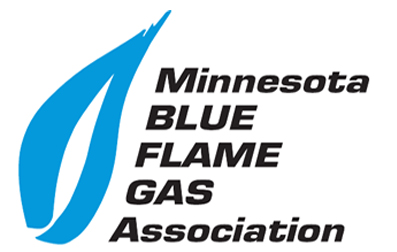 Natural Gas Safety
Natural Gas Safety
Natural gas is very safe, but it’s always better to be careful. Follow these guides to ensure your natural gas use is accident free.
 Benefits of Natural Gas
Benefits of Natural Gas
Natural gas is the cleanest and most efficient fuel for your home or business.
 Natural Gas Glossary of Terms
Natural Gas Glossary of Terms
AGA — American Gas Association.
Air-gas-ratio — The ratio of the air supply to the gas supply, necessary to achieve proper combustion.
BTU — British Thermal Unit — A unit of heat measurement which is defined as the amount of heat required to raise one pound of water one degree Fahrenheit. Processed natural gas typically contains roughly 1,000 BTU/cubic foot.
Base Pressure — The pressure used as a standard in determining gas volumes. The pressure condition used to define a cubic foot of natural gas if four ounces per square inch.
Cathodic Protection — A method of preventing the corrosion or deterioration of underground pipe and connected equipment, through the control of electrolysis.
Ccf — Abbreviation for 100 cubic feet of natural gas.
City Gate — The point or measuring station at which a gas distribution utility receives natural gas from pipeline transmission company.
Distribution System — The mains, service piping and equipment operated by a distribution company to deliver natural gas to customers.
Gas, Natural — A naturally occurring mixture of hydrocarbon and non-hydrocarbon gases found in porous geological formations beneath the earth’s surface. The principal component is methane.
Leakage — Volume of gas lost through holes in pipes or fittings, bad joints, or broken pipes or fittings.
LDC — Local Distribution Company — A natural gas utility company that delivers natural gas directly to the consumer.
Load — The rate of natural gas from one point to another. As contrasted with service piping, mains generally carry larger volumes for general or collective use.
MAOP — Abbreviation for maximum allowable operating pressure. Refers to the maximum gas pressure at which a piping system is allowed to operate.
Mcf — Abbreviation for 1,000 cubic feet of natural gas.
Meters — Devices used to measure and record the usage of natural gas. Typical types are orifice, positive displacement, rotary and turbine.
Mmcf — Abbreviation for one million cubic feet of natural gas.
Odorization — The placing of malodorant, usually mercaptan, in natural gas for the purpose of detecting its presence. Especially helpful for reporting and investigating possible leakage.
Pipeline — Piping designed to deliver larger volumes of natural gas over great distances; are usually operated by gas transmission companies and often are larger diameter pipes operating at high pressure. Most city gates receive natural gas from a pipeline.
Pressure Regulator — Device used to reduce and maintain a constant pressure to a piping system.
Pressure Regulating System — Consists of equipment installed for the purpose of reducing and regulating pressure to natural gas mains.
Relief Valve — Over-pressure protection device designed to exhaust excess natural gas pressure to atmosphere and prevent piping from operating above the MAOP.
Service Line — Piping delivering natural gas from the distribution main to the customer’s premises.
Therm — A quantity of heat equal to 100,000 BTU, the basic unit of measurement by which natural gas is generally sold. Approximately the same heat content as 100 cubic feet of natural gas.


 Other Natural Gas Organizations
Other Natural Gas Organizations